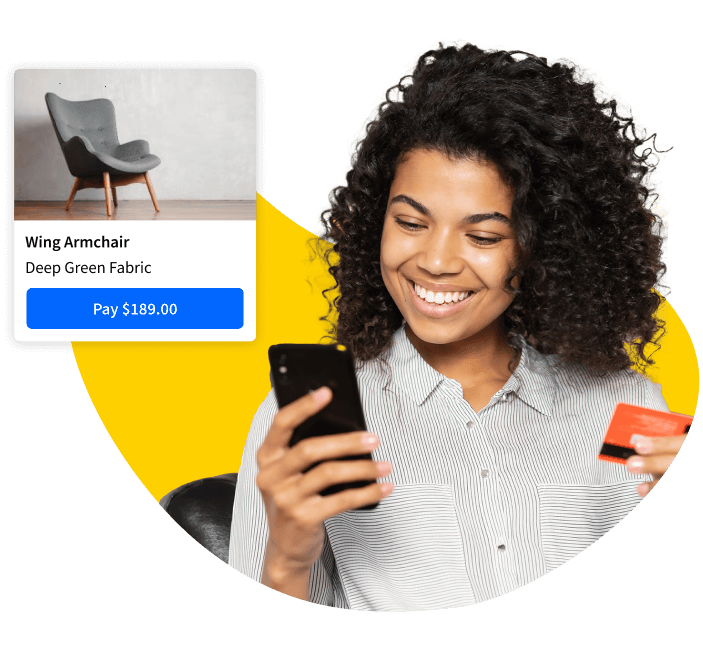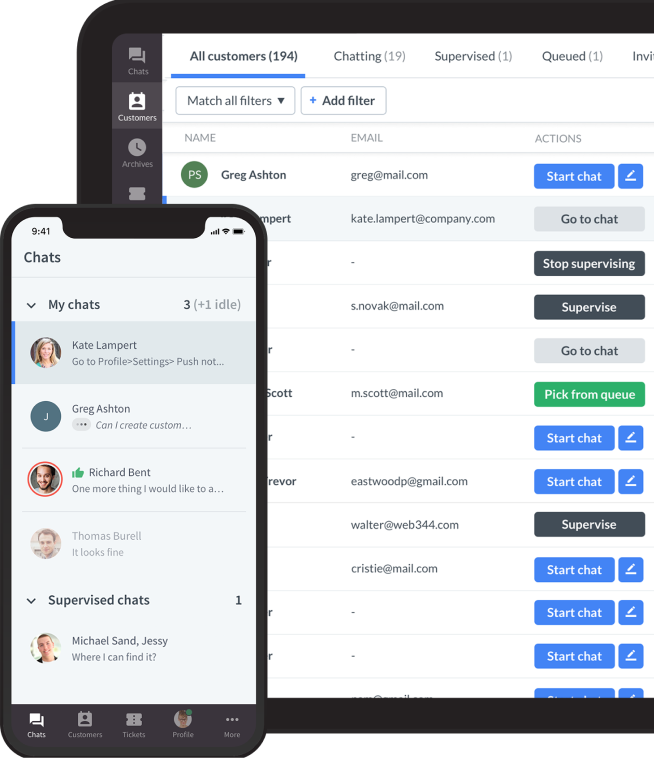Showing top 0 results 0 results found
Showing top 0 results 0 results found

Ecommerce doesn’t have to be hard. Having an online store can cost you virtually nothing and put you in touch with customers worldwide.
While you still need a strong marketing strategy and a great product to sell, there is much less to lose when you opt for a digital store over a traditional one. Here’s how you can launch your online store in eight simple steps.
Choose your products with heart and hustle
It's essential to balance your passion with products that sell online. Combining your enthusiasm with market demand is the sweet spot for success.
Whether you want to start a health food store or online plant business, ask yourself these questions:
- Is there a healthy market for your product online right now? Some niches aren’t open to online disruptors. Still, you might have more success if you change the conversation slightly, like offering a subscription box model instead of a traditional single purchase item.
- Are you designing a new product for your new venture? Have you validated your product idea with your target market? A great idea is only great if people are willing to pay for it.
- Will you make the product yourself or work with a wholesaler/dropshipping supplier? Selling homemade products is good if you can keep up with demand (which can slow you down surprisingly quickly, especially in the beginning). A dropshipping business can be an excellent option for online store owners as it lets you start an online store without inventory.
- Do you know where you want to sell? Ecommerce platforms such as Etsy and Amazon have entirely different audiences. Or maybe you want to start a Shopify store?
- Passion isn’t everything, but are you at least interested in the product? Running an ecommerce store is a lot of work, and you can get bored if the products are not interesting to you. The best ecommerce entrepreneurs with successful online stores are often product and brand advocates.
2. Dive into market research and get to know your crowd
Market research is essential before diving headfirst into your online store venture. It should provide you with a blueprint for your ecommerce business.
Begin by keeping a close eye on your competitors. What products are they selling? How are they marketing them? Do they offer any promotions or special deals? This sneak peek into their strategies can provide valuable insights into what's currently hot or not in the market.
Look at all the big online marketplaces and the smaller ecommerce brands that offer your product. What are the USPs of these different stores, and how will you be able to compete with them (look at content, usability, social media, SEO – get granular with your analysis)? Consider using competitor research to help you design a better online business from day one.
Also, get to know your customers better by delving into their preferences. What are their likes and dislikes? What specific problems are they looking to solve with your products? You can gather this information by chatting with friends, conducting surveys on social media, or exploring relevant online forums.
You want your store to stand out from the crowd and gain traction, so choose a narrow niche and meet its needs well. Any website can sell a broad range of generic products, so your target audience needs a reason to come to you over anyone else.

3. Decide how to handle inventory
Once you’ve settled on a product, you must form a plan for order fulfillment and inventory. You will need a proper logistical framework to allow for growth and expansion, but you also need a manageable system in your business’s early stages.
Will you handle everything yourself, or are you considering dropshipping or warehousing? Numerous ecommerce entrepreneurs opt for a dropshipping business model.
Dropshipping means that the product goes straight from the supplier to the customer. You purchase the product from your dropshipping supplier at a lower cost, and the supplier handles the packing and shipping of the product directly to the customer's address. Usually, the customer pays for the shipping costs.
Make sure you offer different shipping options, and don’t forget to factor in shipping returns. Shipping will eat into your profit margins, but at the same time, not having reliable shipping may damage your brand.
Weigh the pros and cons, and choose the method that fits your budget and space. Is storage rent getting you down? See if you can get shared warehouse deals to lighten the rent load; many entrepreneurs start with storing inventory at home (if you can deal with all the boxes – go for it). But keep in mind that handling all of the store inventory yourself may not be the best option.
4. Choose a platform for your ecommerce store
Online store options
First, you can choose the self-hosted route for ecommerce. This can work great, but being tech-savvy or willing to learn is essential. Self-hosting often involves adding ecommerce features to your existing website. This can be done by downloading a WordPress plugin that gives your website ecommerce capabilities, or if you're comfortable with coding, you can build a custom store from scratch using open-source ecommerce tools and platforms (more open source ecommerce options here).
If you’re not so confident, you could try using a hosted ecommerce platform instead, such as Shopify, WooCommerce, or BigCommerce. These platforms make it easy to create an online store from scratch. Consider what features you'll need to sell your products smoothly, and choose from a range of customizable design templates that automatically scale for tablets and smartphones. Don't overlook this last one thing.
Go multichannel
Marketplace selling can help you build sales capital and brand awareness, but don’t believe the hype about making millions on Amazon in minutes. Besides the obvious ones like Amazon, have you considered selling on niche online marketplaces?
Selling via social profiles like Facebook and Pinterest is great for entrepreneurs who can create a native community with meaningful content.

5. Put customers first, connect, and grow
The most successful online stores operate with a “customer’s first” brand culture. Don’t go into ecommerce if you're not interested in providing exceptional customer service. It’s a demanding industry that takes it out of you – you need to be committed to serving up a great brand experience. Read more on why customer service is important.
Creating a smooth and enjoyable shopping experience is vital. Before you start selling, ensure your website is easy to navigate, loads quickly, and has secure payment options. Then, focus on connecting with customers and providing an amazing experience.
You can start with the basics, like trying out LiveChat and encouraging visitors to chat with you. By setting up targeted messages, such as greetings or announcements, that show up to website visitors at the right time, you can generate more chats, build trust, and close more sales.
Just like Sephora, which, using LiveChat, increased average order value by 25%. How? Since January 2020, clients who were maybe on the fence can get advice on products they’re thinking of buying. That includes a service called “Expert Chat,” which involves advice from make-up and skincare experts. Customers get all the help they need wherever they are.
All the little things you do make a difference for your customers. Gifts and promotions are nice, but don’t always reach for the easy wins. Focus on creating relationships and offering value. Here are ten great ways to improve your online customer experience.
6. Craft your brand
Crafting your brand is a critical aspect of building a successful online store. It's all about creating a unique identity that resonates with your target audience and leaves a lasting impression. Here's a more detailed breakdown of the elements involved:
- Telling your story: Your brand story is like the heart and soul of your business. The narrative explains why you started your online store, what drives you, and what differentiates your products. Sharing your story helps customers connect with your brand on a personal level. It could be a tale of your passion for the products, a personal journey, or a commitment to a cause. Authenticity is key here - make sure your story is genuine and aligns with your values.
- Creating a catchy logo: Your logo is often the first visual representation of your brand that customers encounter. It should be memorable, easily recognizable, and reflect your brand's personality. Consider your logo's colors, fonts, and imagery; these elements convey specific emotions and messages. A professional logo design can establish credibility and trust.
- Maintaining visual consistency: This means using the same colors, fonts, and design elements across all your marketing materials, website, social media profiles, and packaging. A consistent visual identity helps reinforce brand recognition and builds trust with your audience.
- Reflecting values and quality: Your brand should communicate what you stand for and the quality of your products or services. If you prioritize eco-friendliness, ethical sourcing, or exceptional craftsmanship, these values should be evident in your branding.
7. Online store launch announcement
It's time to roll out the red carpet for your store. Use social media, email marketing, and other tricks to tell the world about your online shop. Start planning your grand opening well in advance. Create a marketing timeline that includes all the steps you need to take before the big day.
Leverage the power of social media to create buzz. Begin teasing your store's launch a few weeks before the opening. Share sneak peeks of your products, behind-the-scenes photos, and countdown posts to build anticipation. Use relevant hashtags and encourage your followers to share your posts. Learn from Gary Vee and conquer social media with a “jab, jab, jab, right hook” mentality, and give more than you take.
Your email subscribers are likely some of your most engaged customers. Send out email announcements about your store's grand opening. Include compelling visuals, a brief story about your brand, and details about any special offers or discounts you provide early customers.
Partner with influencers or collaborate with other brands in your niche. Influencers can introduce your store to their followers, while collaborations can expand your reach to a broader audience. To create a sense of urgency and reward early customers, consider offering exclusive deals or discounts during the grand opening period. Limited-time offers can encourage people to make their first purchase from your store.
Actively engage with your audience during the launch period. Respond promptly to comments and messages on live chat and social media, and thank customers for their support. Positive interactions can lead to customer loyalty.

Online store launch announcement sample
Here's a sample online store launch announcement that you can use as a template and customize to fit your brand and products:
Subject: Exciting News! Our Online Store is Now Open 🚀
Dear [Your Store's Name] Community,
We are thrilled to announce that [Your Store's Name] is officially online, and our virtual doors are wide open to welcome you.
🛍️ Shop Now: [Insert Store Website URL]
At [Your Store's Name], we've been working tirelessly to curate a unique collection of [mention your product categories] that we believe will bring joy, style, and functionality to your life. Whether you're looking for [highlight a few essential products or categories], [Your Store's Name] has something special just for you.
Why Choose [Your Store's Name]?
🌟 Quality you can trust: We've sourced the finest [mention the materials or ingredients] to ensure the highest quality for our products.
🚚 Fast and reliable shipping: Your orders will be carefully packaged and shipped with care to your doorstep.
💬 Exceptional customer service: Our team is here to assist you every step of the way, ensuring your shopping experience is nothing short of amazing.
To celebrate our grand opening, we're offering an exclusive limited-time offer:
🎉 Get [insert discount percentage] Off Your First Purchase! Use code [insert discount code] at checkout.
But hurry, this offer won't last forever!
Stay connected with us on social media for the latest updates, product launches, and exclusive promotions:
📷 Instagram: [@YourStoreInstagram] 🐦 Twitter: [@YourStoreTwitter] 📘 Facebook: [@YourStoreFacebook]
Thank you for being a part of this exciting journey with us. We can't wait to serve you, and we hope you enjoy shopping at [Your Store's Name].
Happy shopping, and welcome to the [Your Store's Name] family!
Warm regards,
[Your Name] Founder, [Your Store's Name]
8. Monitor and adapt for continuing improvement
After launching your online store, the work is still ongoing. Continuously monitor your sales, website traffic, and customer feedback. Use this data to make informed decisions and adapt your strategy as needed.
If you added LiveChat to your online store, use reports to gain valuable insights and improve your sales and customer service. Here are some examples:
- Analyze chat ratings and satisfaction:
- Review customer ratings and feedback provided after chat sessions.
- Identify trends in ratings and comments to understand what customers appreciate and needs improvement.
- Use positive feedback as testimonials on your website or marketing materials to build trust with potential customers.
2. Assess response times:
- Examine response times to ensure your team promptly addresses customer inquiries.
- Identify peak hours or days when response times may be slower and consider adjusting staffing accordingly.
- Review customer ratings and feedback provided after chat sessions.
3. Identify popular topics and FAQs:
- Review chat transcripts to identify common questions and concerns.
- Use this information to create or improve FAQ sections on your website or develop content that addresses these issues proactively.
There are many more ways in which LiveChat reports help online businesses improve customer service and boost sales. Read more here.
Start an online store
Launching an online store is an exciting journey that should combine your passion with savvy marketing. By following these eight straightforward steps, you can build an online business that thrives.
Remember, success might not happen overnight, so stay patient and keep refining your approach as you chase your online retail dreams.
Get a glimpse into the future of business communication with digital natives.
Get the FREE report








Comments